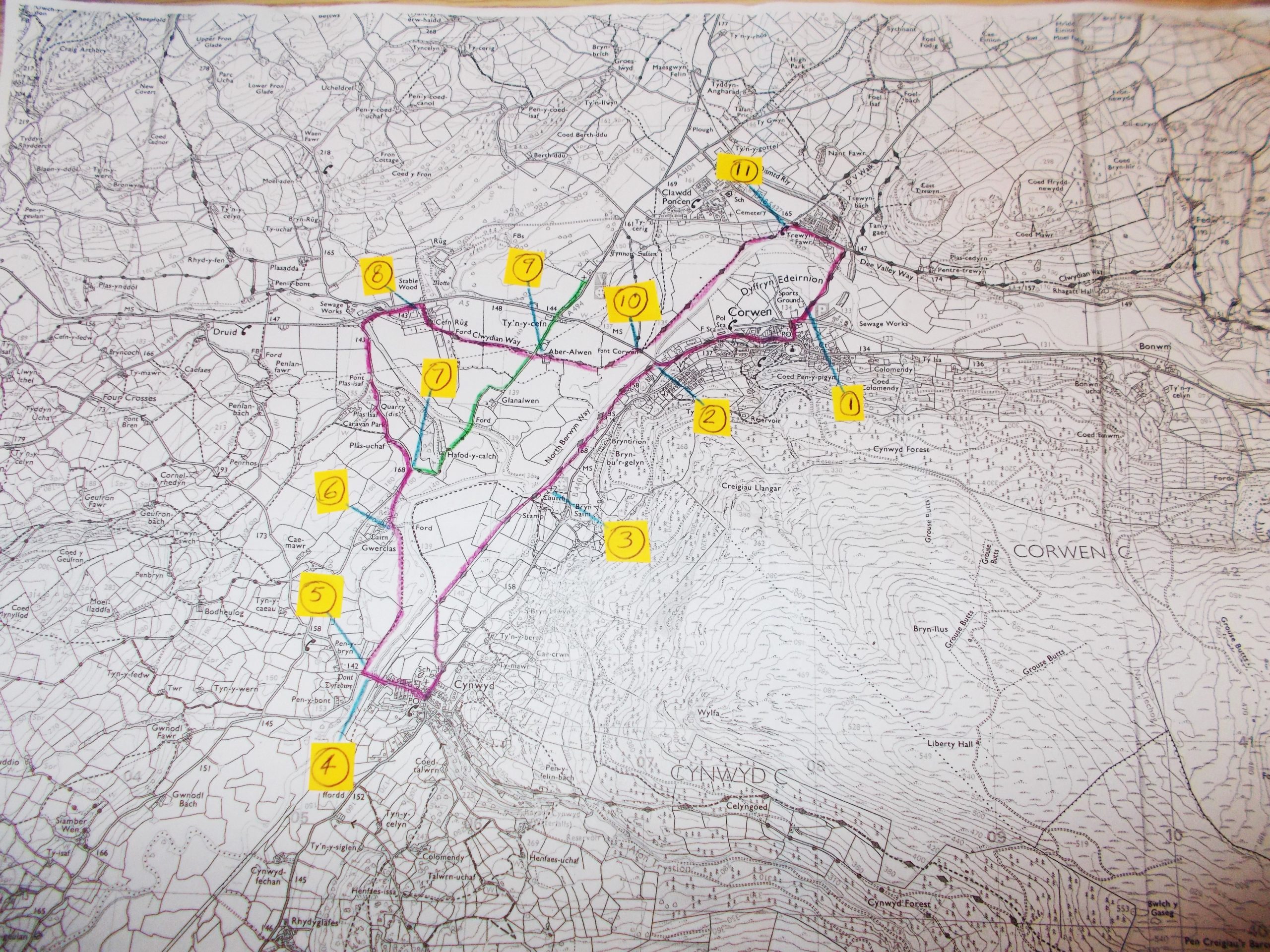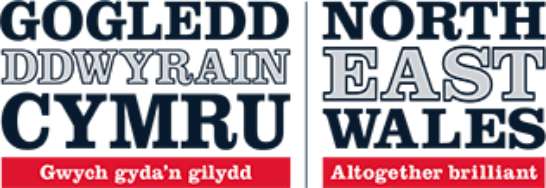Pont Dyfrdwy
This is our penultimate walk from our guest blogger Julie Brominicks the author of The Edge of Cymru. They are all accessible by public transport and each one will have a simple map for you to follow. We want to inspire you explore our beautiful part of the world that little bit deeper.
Swallowing sunlight like beer in a pint glass does but sounding like wine being poured from a bottle (and also a laundrette with all the machines running) there goes Afon Dyfrdwy, scudding under the bridge. The river is a muscular thing, bulging and flexing, forming diamonds on its surface that repeat the shape of the piers as it rushes through the arches.
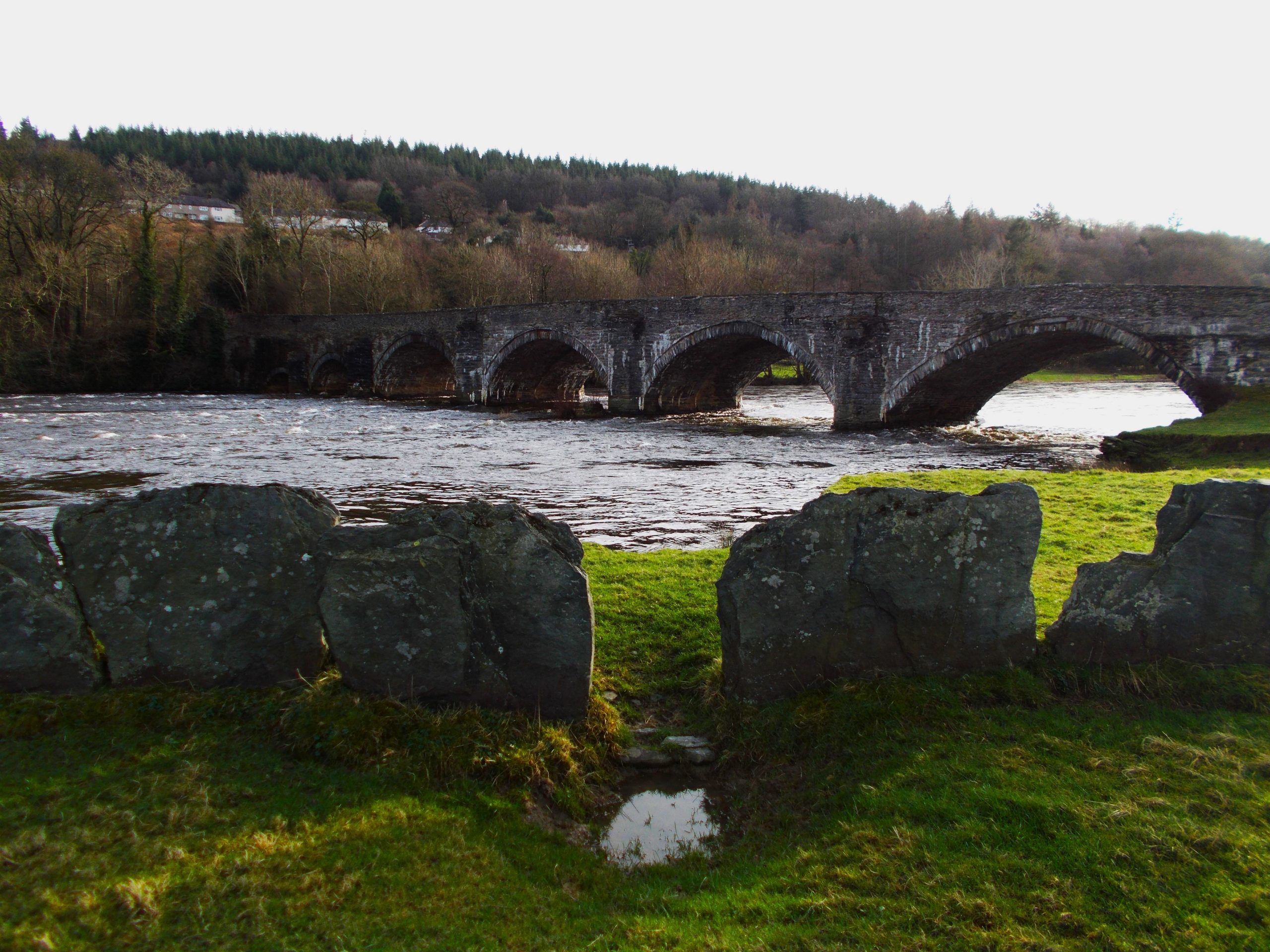
From its source in Eryri, through Llyn Tegid, to its vast shifting saline north-coast estuary, Afon Dyfrdwy is a designated Special Area of Conservation and a regular companion in Sir Ddinbych. On this walk between Corwen and Cynwyd, it bubbles fast and clear over a stony bed. Boughs trail their twigs into it, like the fingers of a footballer slapping hands with fans as they circuit the pitch. Birdsong peals in the willow, ash and oak on the banks.
A Natural Resources Wales conservation project (LIFEDeeRiver) is in the process of restoring the health of Afon Dyfrdwy. Measures include planting trees along the banks, re-seeding the river with endangered freshwater pearl mussels, and removing weirs to ease the passage of migratory fish like salmon, sewin, eels, grayling and three species of lamprey – sea, river and brook. Along this stretch between Corwen and Cynwyd, livestock fencing has been installed to reduce nutrients and sediments entering, contaminating and clouding the water.
I like to watch the river from the pedestrian recesses built into the bridges, particularly from Pont Dyfrdwy at Cynwyd. This bridge was probably built in the eighteenth century, possibly earlier – some believe it to be the one Edward Lhuyd the antiquarian described at the end of the seventeenth century. Its stones secrete tiny grottos; micro-habitats of spiders, ants and bryophytes. I think I am looking at rock then see it is itself a layer of grey lichen. Like tiny cloud-forests, moss seed-heads catch morning dew and water vapour from the singing, dancing river below.
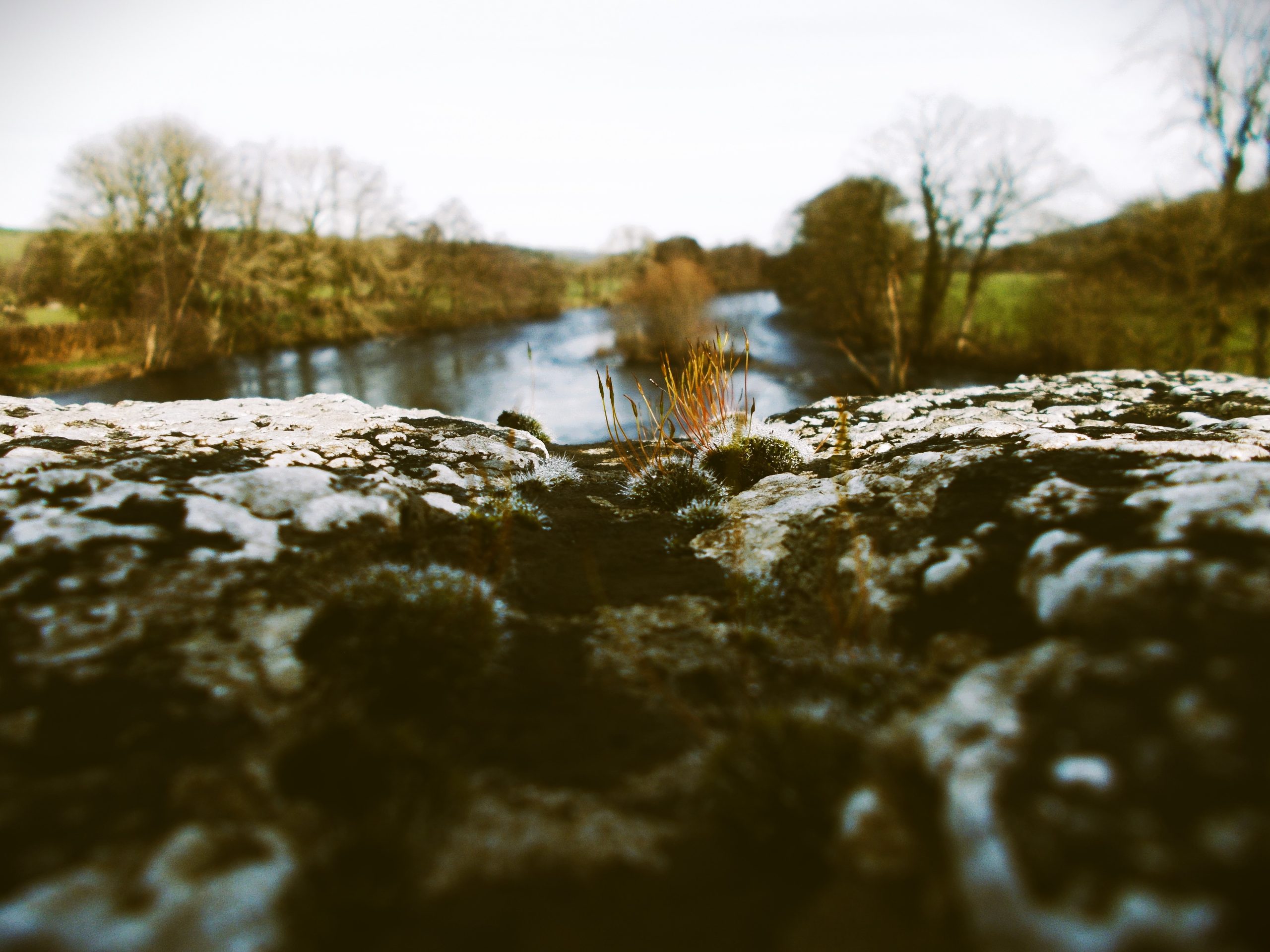
Bus
Corwen is a bus hub. The long distance T3 between Y Bermo (Barmouth) and Wrecsam calls every couple of hours. (Its variant the T3c goes via Llanuwchllyn, Llandderfel, Llandrillo and Cynwyd). You can also reach Corwen on regular services from Rhuthun by the 76, from Bangor on the T10 and from Chester on the T8.
For more information about public transport in Sir Ddinbych see https://www.denbighshire.gov.uk/en/parking-roads-and-travel/public-transport/public-transport.aspx
To plan your journey use https://www.traveline.cymru/
Don’t forget that a 1bws ticket for £6.50 gives you unlimited travel in North Cymru on all services.
Walk
This 8-mile circular walk is soothing in summer when the weather is too hot for strenuous activity and you crave tree shade and the presence of water. Although easy-grade it includes some stiles – one of which is broken and a bit of a scramble! The walk takes you south from bustling Corwen to peaceful Cynwyd on the east bank of Afon Dyfrdwy and returns to Corwen on the west bank and via Rhug. If you want to shorten it slightly, in dry weather and if the river is low enough, you can make a ford crossing instead of going via Rhug. The walk is largely wooded and has refreshment stops in Corwen, Cynwyd, and Rhug Organic Farm Shop and Cafe. Furthermore if you plan in advance you can visit three magnificent churches en route. The church of Saints Mael and Sulien in Corwen is open daily. The Old Parish Church at Llangar, with its medieval murals is open occasionally (see www.cadw.gov.wales/visit/places-to-visit/llangar-old-parish-church#overview) and you need to make arrangements with Cadw to visit Capel y Rug which necessitates a deviation from your route. (www.cadw.gov.wales/visit/places-to-visit/rug-chapel) Take your time and some drinks, maybe a picnic, and enjoy the river.
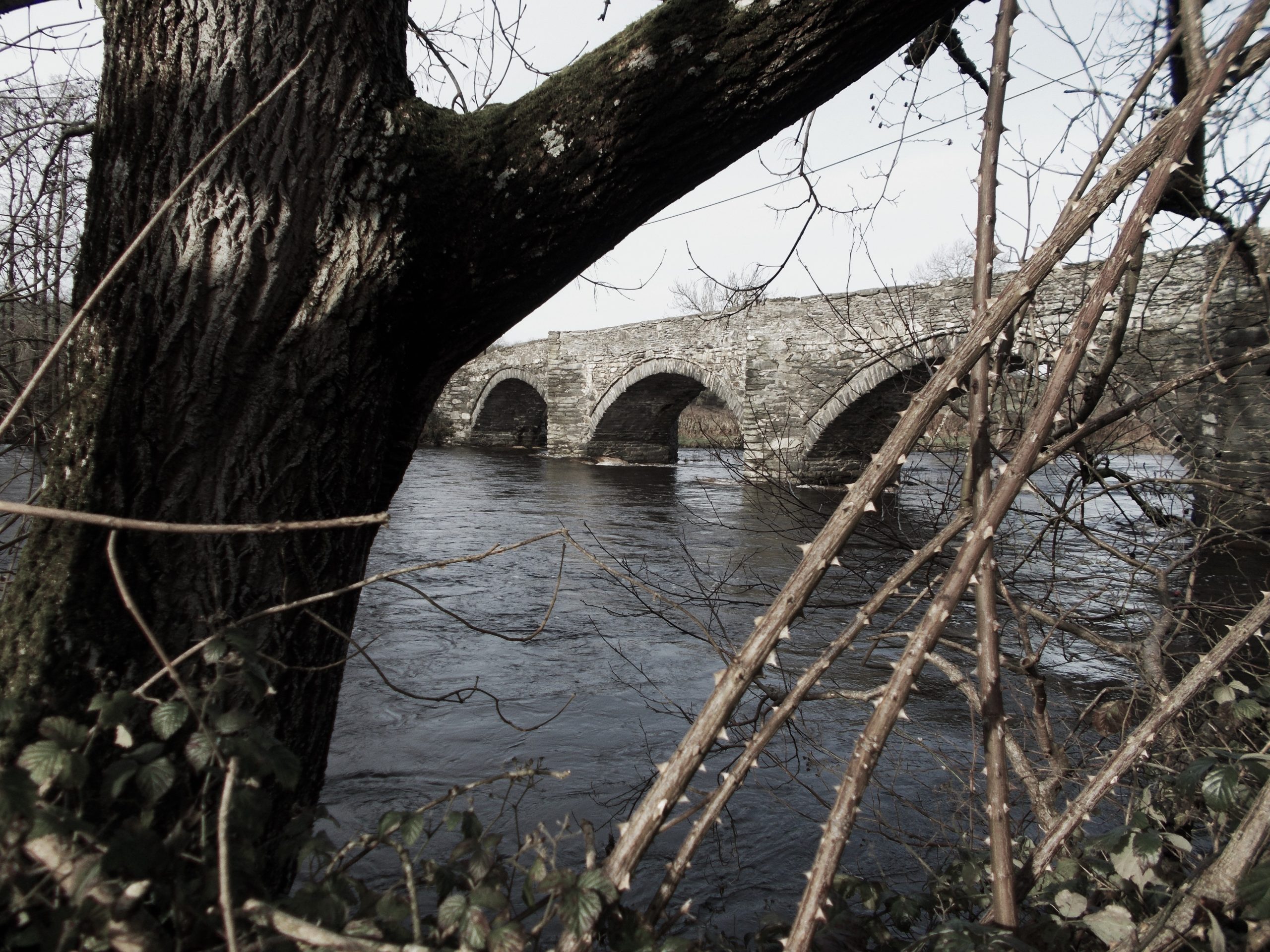
- From the bus station, head west through charismatic Corwen.
- Instead of crossing Pont Corwen, leave the road but stay on Taith Clwyd which continues at the edge of town over a stile onto the wooded old railway path.
- Even if the church at Llangar (whose medieval murals include a skeleton with a spear) is not open, it is very much worth visiting the graveyard. The name is said to derive from Llan Garw Gwyn – church of the white deer, built where one was seen springing from a thicket.
- Continue along the route which follows the former Great Western Railway line between Rhiwabon and Y Bermo (Barmouth) till reaching the village of Cynwyd, cross Pont Dyfrdwy.
- Having crossed the bridge, climb down to the follow the path on the west side of the bank, keeping close to the water. Climb over or through the broken stile.
- Make for the trees to your left where you will see a farm gate at Gwerclas. Here you can join the farm track which almost immediately meets a lane which you can either follow to the A5 at Rhug…
- Or, in very dry weather, you can take the first right turning and pass the house of Hafod-y-calch down to the ford. Cross the ford, continue on the lane, then turn right onto Taith Clwyd.
- If you have not crossed the ford keep on the quiet lane to Pont Melin Rhug, then on reaching the A5 keep within the boundaries of Rhug Organic Farm Shop and Café. Follow the waymarked path through the farm, as it passes sheds and bee hives, and joins Taith Clwyd.
- If you have made prior arrangements to visit Capel y Rug turn left where the track meets another.
- Otherwise, keep to Taith Clwyd. When you reach Pont Corwen cross the road and continue along Taith Clwyd as it follows the river bank. This last stretch of the walk takes you between old slate fences and the river. Look out for the ranunculus beds (water crowfoot) flowering in the river here, in early summer.
- Finally, keep to Taith Clwyd as it joins the road, then cross the river by Green Lane Bridge, and return to Corwen bus station.
